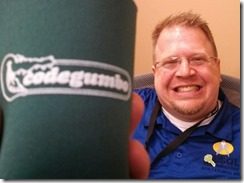I know I’m a day late with this announcement, but I haven’t blogged in months, so what’s the rush? I am very excited, however, about presenting a full session and a lightning talk at the PASS Summit in Seattle in November.
THE ELEPHANT IN THE ROOM: A DBA’S GUIDE TO HADOOP AND BIG DATA
Speaker(s): Stuart Ainsworth
Duration: 75 minutes
Track: BI Platform Architecture, Development & Administration
You’re a SQL Server DBA working at Contoso and your boss calls you out of your cubicle one day and tells you that the development team is interested in implementing a Hadoop-based solution to your customers. She wants you to help plan for the implementation and ongoing administration. Where do you begin?
This session will cover the foundations of Hadoop and how it fundamentally differs from the relational approach. The goal is to provide a map between your current skill set and "big data.” Although we’ll talk about basic techniques for querying data, the focus is on basic understanding how Hadoop works, how to plan for growth, and what you need to do to start maintaining a Hadoop cluster.
You won’t walk out of this session a Hadoop administrator, but you’ll understand what questions to ask and where to start looking for answers.
TEN-MINUTE KANBAN
Speaker(s): Stuart Ainsworth
Duration: 10 minutes
Track: Professional Development
The goal of this Lightning Talk is to cover the basic principles of the Lean IT movement, and demonstrate how Kanban can be used by Administrators as well as developers. Speaker Stuart Ainsworth will cover the basic concepts of Kanban, where to begin, and how it works.
Kanban boards can be used to highlight bottlenecks in resource and task management, as well as identify priorities and communicate expectations. All this can be done by using some basic tools that can be purchased at an office supply store (or done for free online).

